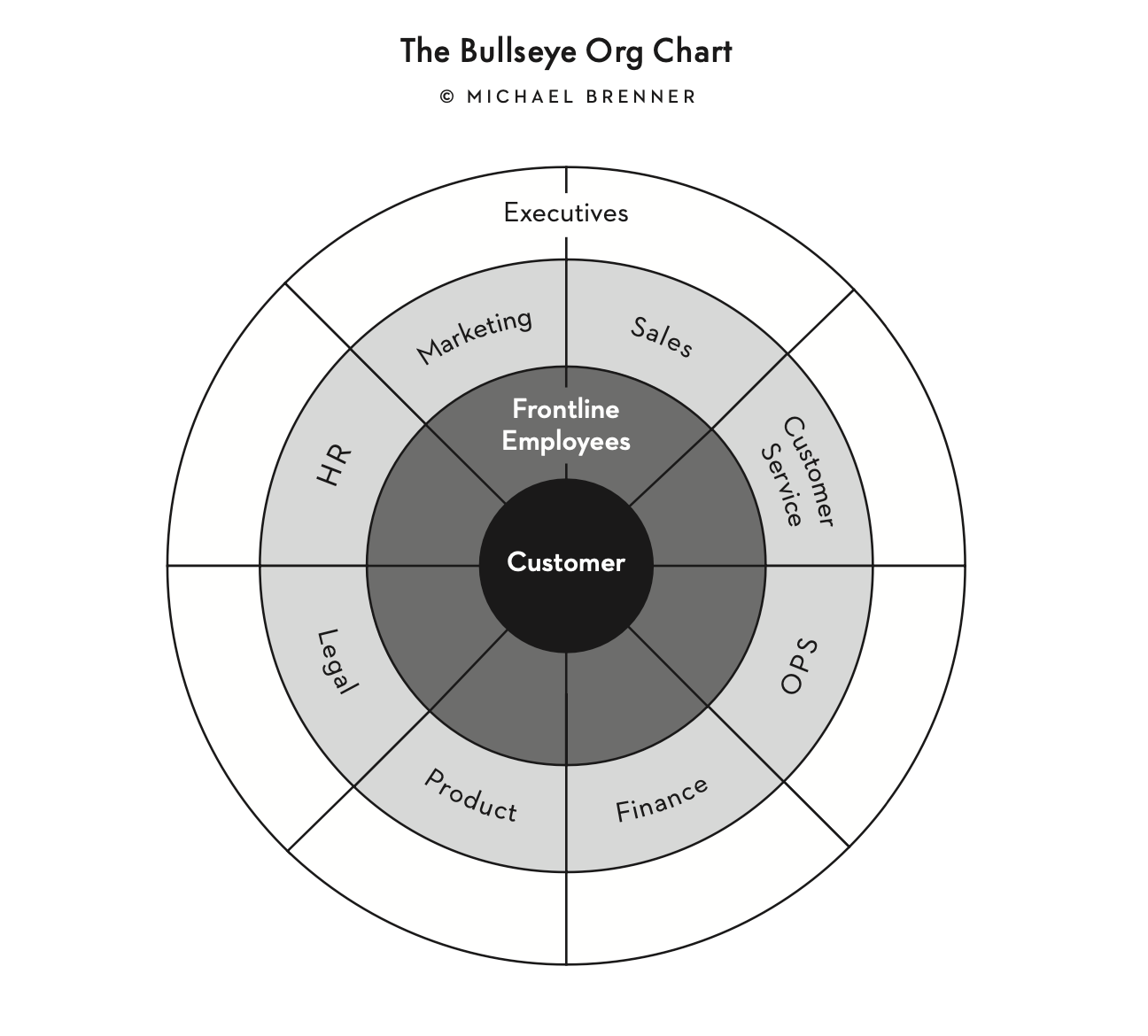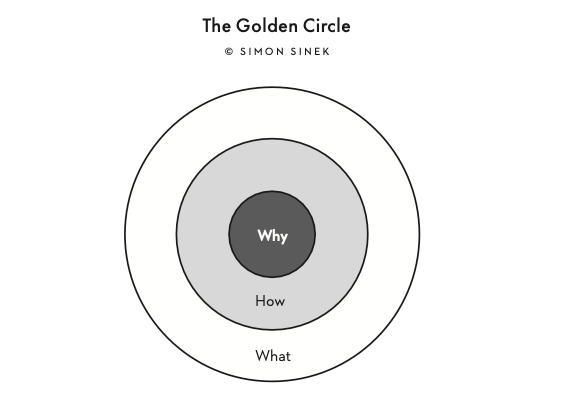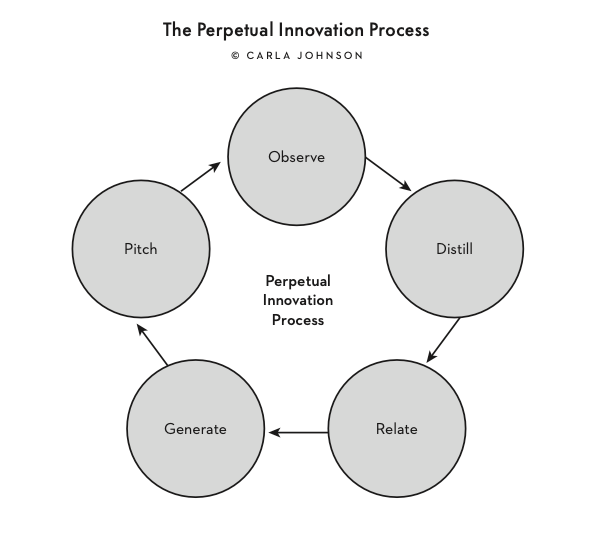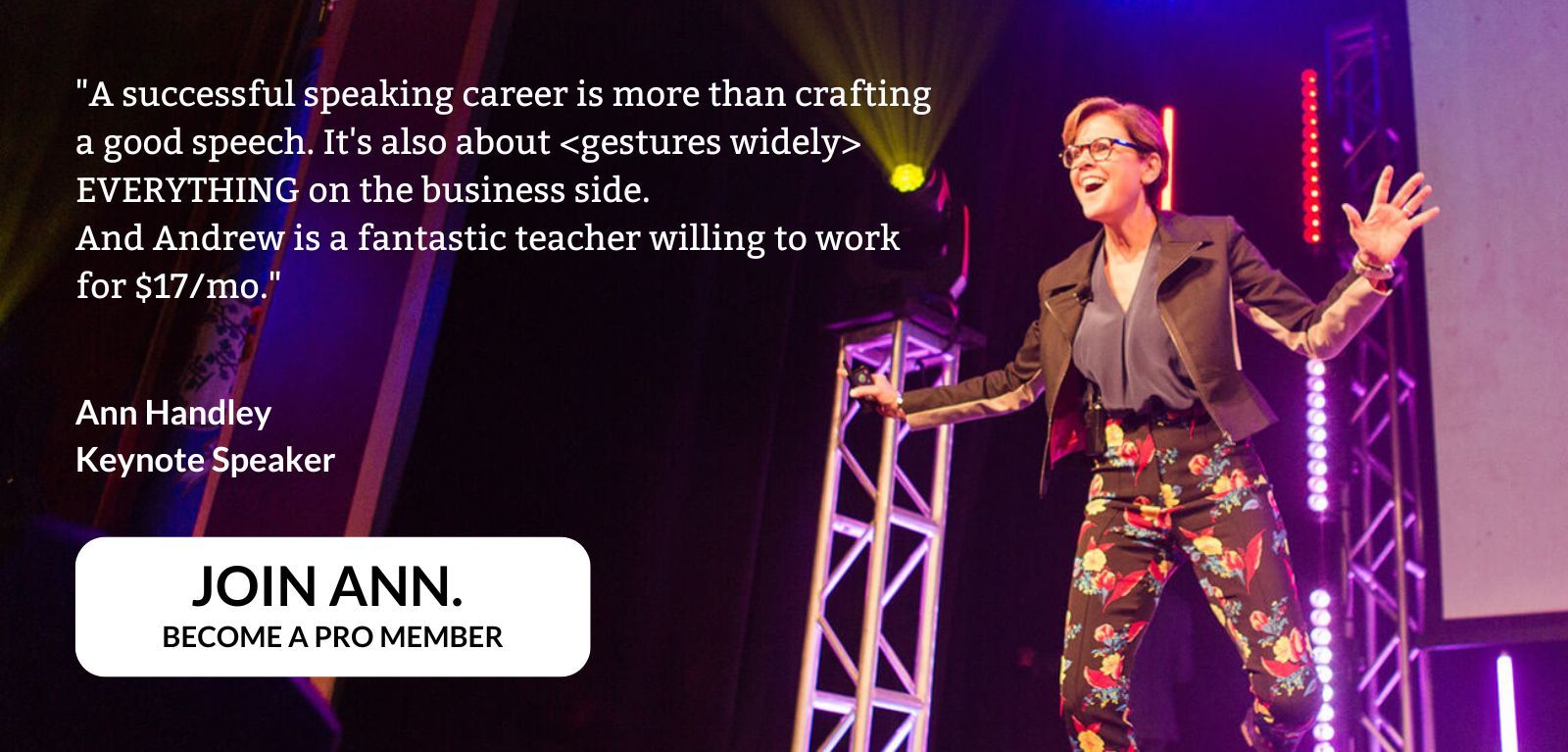Imagine this—you’re delivering a keynote, the audience is nodding along, and suddenly, dozens of cell phones shoot into the air…
No, they’re not texting. They’re snapping photos of your slide.
That’s the power of a contextual model.
And if you want to be a referable speaker, you need one.
But, here’s where I might blow your mind…
A contextual model is even MORE than just a visual representation of an idea or a process. In fact, the very process of creating a contextual model can be a pivotal part of your speech-writing process.
I recently discussed this with model collaborator Sienna Roman of The Mozaic Collective. We had a fascinating conversation that will take your understanding of this seemingly simple speech tool – and help you see its truly astounding power.
(Sienna and I both struggled with what title to give her. She’s more than a graphic designer… more of a philosopher, idea therapist, concept sherpa, and devil’s advocate all rolled into one. So, for simplicity, let’s call her a “model collaborator” and see how that goes.)
To get things rolling, let’s define the topic of our discussion today…
What Is a Contextual Model?
A contextual model is a simplified visual representation of a complex idea, process, or system. It clarifies a thought, suggests a course of action, and invites conversation. More importantly, it transforms the way your audience sees the world.
This isn’t just a fancy pie chart or a generic Venn diagram. It’s your intellectual property—your way of framing an idea so clearly that people can’t help but share it.
Want proof? Take speaker Michael Brenner’s contextual model from his speech, one he titled the Bullseye Org Chart. His model distilled a complicated company structure into a single, powerful image. It was easy to explain, easy to remember, and—most importantly—easy for his audience to apply.

Caption: The Bullseye Org Chart is a contextual model from Michael Brenner that helped his audience members better embrace and apply the ideas from his speech.
That’s what you’re aiming for.
A great contextual model will shift the way your audience sees the world and help you demonstrate your signature intellectual property in an easy-to-understand way.
In fact, sitting on my end table right now is my (very well) worn copy of The Referable Speaker. The ideas in this book – written by our friends Andrew Davis and Michael Port – tell us that a contextual model is an important element of the “expertise factor.”
It’s just one part of the overall F+E+E Factor they use to describe the factors needed to become a referable speaker.
They tell us that a contextual model should be...
“easy enough to draw on a napkin, but nuanced enough to invite questions.”

Caption: Jay Acunzo’s model entitled The Unthinkable helps him show organizations how to leap from following the best practices to trusting their intuition.
This chapter ends with the statement that building a contextual model is “deceptively hard” and it’s the very act of simplifying a complicated idea that makes it so effective in elevating the message in your speech.
Hmm… “deceptively hard.”
That seems like the perfect segue to tell you about my conversation with Sienna…
Why a Model Matters (More Than You Think)
We often assume that a contextual model exists for the audience—to help them understand an idea. That’s true.
But according to Sienna, an expert in visual idea development, the real magic happens before you ever step on stage.
“Contextual models are a tool that I think anyone can use to expedite the evolution of a really good idea. Otherwise, when we have an idea we think is great, it just takes its natural course of trying it out, challenging it, testing it out on audience members or just in practice and then seeing where it's weak.
But the work that we do with contextual models expedites that whole process limited by time because basically you're pressure cooking an idea through the work of visualizing it.”
She went on to explain that the process of building a contextual model can help a speaker who is 80% clear on their ideas. They just need that “final kick” to clarify their ideas.
The process can also be used with speakers who are grooming an idea from the beginning. They have a general idea they think is great, but they need help defining its boundaries, finding gaps in their thinking, or making sure the idea stands up to various scenarios.
Notice, we’re only talking about the idea so far.
That’s because Sienna’s process of building a contextual model starts with the speaker’s ideas and only moves into the visual design as a very last step.
Think of this process as your own secret weapon in taking an idea that you think might be good and turning it into a rock solid principle you can proudly teach to others in your speech.
Creating a model forces you to clarify your thinking. It challenges you to simplify, refine, and stress-test your ideas. And when you get it right, you’ll have a repeatable, ownable, signature framework that sets you apart from every other speaker on the circuit.

Simon Sinek uses The Golden Circle to show that people don’t buy what you do, but rather buy why you do it.
What Makes a Great Contextual Model?
The actual model that you create doesn’t have to be a work of art. In fact, Sienna had this to share…
“The biggest misconception, in my opinion, is that the model itself is not impressive. It should be as simple as something you have learned to draw in kindergarten. If it’s anything more complex than that, people won’t remember it.”
That word “remember” is key, because the whole reason you show a contextual model to your audience is so they’ll be able to take the ideas from your speech and apply it to their lives.
Sienna went on to explain that the model itself is underwhelming, but the idea behind it is where the true value lies.
And the process to develop that idea is the biggest value of all.

Carla Johnson’s contextual model helps her explain The Perpetual Innovation Process.
Can You Succeed Without a Contextual Model?
So, it’s worth asking what you risk if you choose NOT to use a contextual model in your speech.
Well, first of all, you risk your audience not understanding your message.
They might leave your talk feeling inspired and energized – but when they sit down to take practical action they don’t know what to do first.
Second, you risk people not remembering your main point.
A contextual model is often the one thing people will whip out their cameras to grab pictures of midway through your speech. It’s the thing they draw into their notes so they can take it with them and show others.
And finally, a speaker who doesn’t go through the process of defining a contextual model might not have a clear idea of their own ideas!
Sienna shared,
“I’ve worked with people where they had an idea for years. They were trying it out in their keynote, but they feel like it’s just missing something.”
When you devote some serious time to thinking through that idea and designing the model, it helps you expedite the process so you can map the connections and patterns. You start to see where there are holes in your idea.
“It’s worth doing if people have the time and the focus to devote to it for a period of time.”
How to Develop Your Own Model
If you’re ready to build your contextual model, DON’T start with the visual design. It can be tempting to jump right to the drawing and doodling part, but there’s a lot of work that needs to be done first.
Instead, start by thinking through the concepts behind the visual. Be sure your model meets these three criteria.
1. It needs to be SIMPLE.
2. It can only represent ONE IDEA.
3. It should be EASY TO REPLICATE.
And finally, consider working with someone like Sienna who can take your ideas and help you go through the deep process of molding those ideas into something truly special.
If you’re a Premium Member, check out the second part of this article, where you’ll see Sienna’s process from start to finish.
Part two of this article covers:
- The 7-step process Sienna uses to go from a “lump” of an idea to a clear, compelling visual framework for your big message,
- Why identifying the right question is critical — and how different question types influence the visuals you create,
- The hidden power of challenging your model (and why a temporary sense of “idea breakdown” is actually a good sign),
- How to know if you should wait before developing your model — and the cost of delaying when your idea is ready,
- A key framework that makes your model clear, memorable, and easy for others to grasp and share.
- And the most common misstep speakers make when developing a contextual model—one that can unintentionally limit the impact of their idea.

Remember, the advice that got you here won’t get you there. It’s time for a massive move.
It’s time for a Monumental Shift.
Thanks for reading!
Rachael






